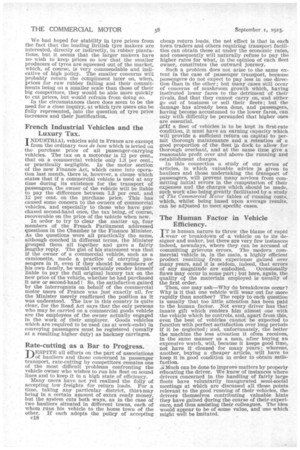Rate-cutting as a Bar to Progress.
Page 2

If you've noticed an error in this article please click here to report it so we can fix it.
JJESPITE all efforts on the part of associations of hauliers and those concerned in passenger transport, rate-cutting by competitors remains one of the most difficult problems confronting the vehicle owner who wishes to run his fleet on sound lines and to keep it in a high state of efficiency. Many users have not yet realized the folly of accepting low freights for return loads. For a time,, taking any particular district, this %may bring in a certain amount of extra ready money, but the system cuts both ways, as in the case of two hauliers situated in different towns, each of whom runs his vehicle to the home town of the other. If each adopts the policy of accepting c18 cheap return loads, the net effect is that in each town traders and others requiring transport facilities can obtain these at under the economic rates, and consequently will naturally refuse to pay the higher rates for what, in the opinion of each fleet owner, constitutes the outward journey.
Such a problem does not arise to the same extent in the case of passenger transport, because passengersdo not expect to pay less in one threelion than in the other ; but many cases still occur of concerns of mushroom growth which, having instituted lower fares to the detriment of their rivals, find that they cannot carry on, and either go out of business or sell their fleets ; but the damage has already been done, and passengers, having become accustomed to the lower fares, can only with difficulty be persuaded that higher ones are essential.
&irlf a fleet of vehicles is to be kept in first-rate condition, it must have an earning capacity which will provide a sufficient return on capital to permit thorough maintenance and a retention of a good proportion of the fleet in dock to allow for thorough overhaul, and at the same time give a reasonable profit over and above the running and establishment charges.
In this connection a study of our series of articles, in which valuable advice is given to hauliers and those undertaking the transport of passengers, will prevent many novices from committing initial errors in the computation of their expenses and the charges which should be made, such work also being greatly facilitated by a study of The Commercial Motor tables of running costs, which, whilst being based upon average results, can be adjusted to meet specific cases.




























